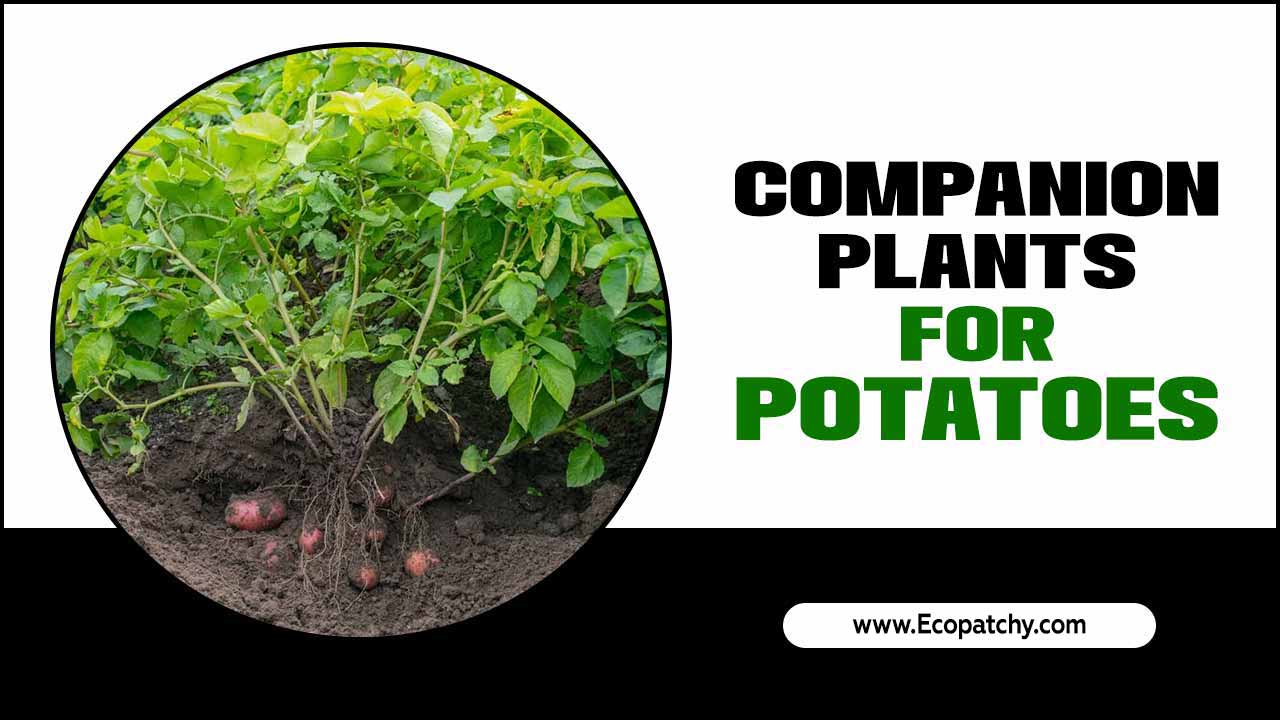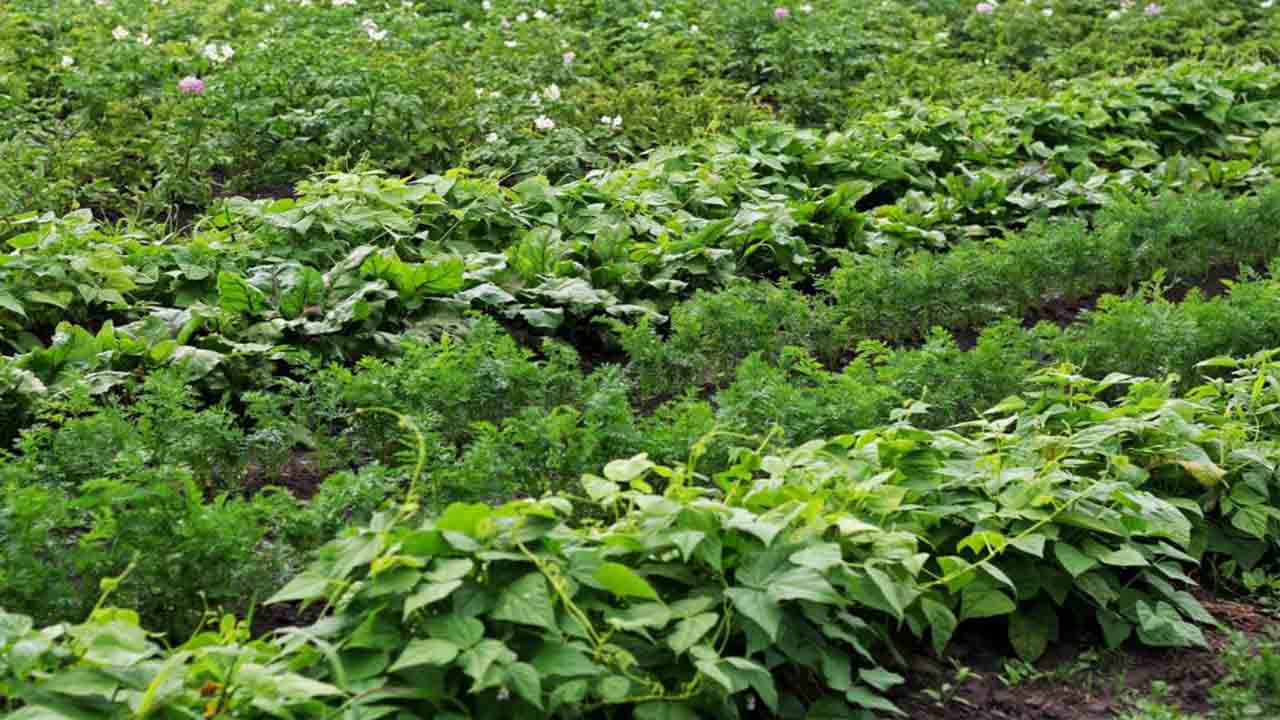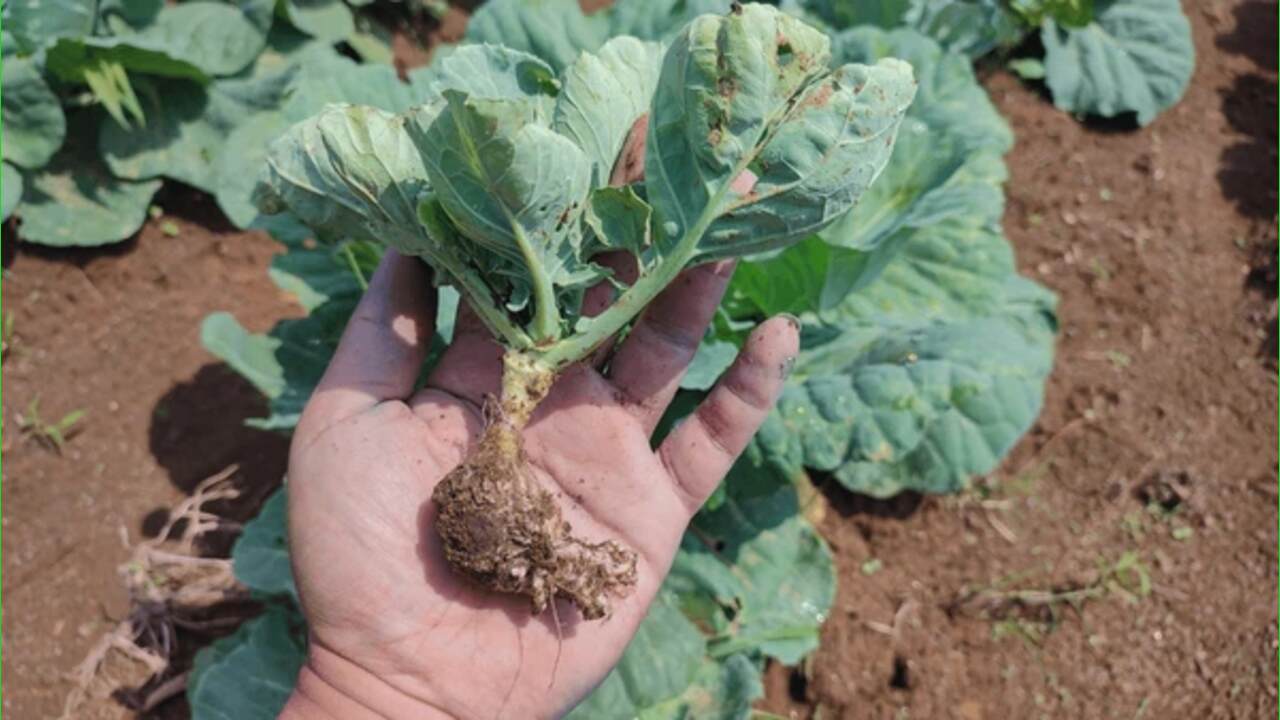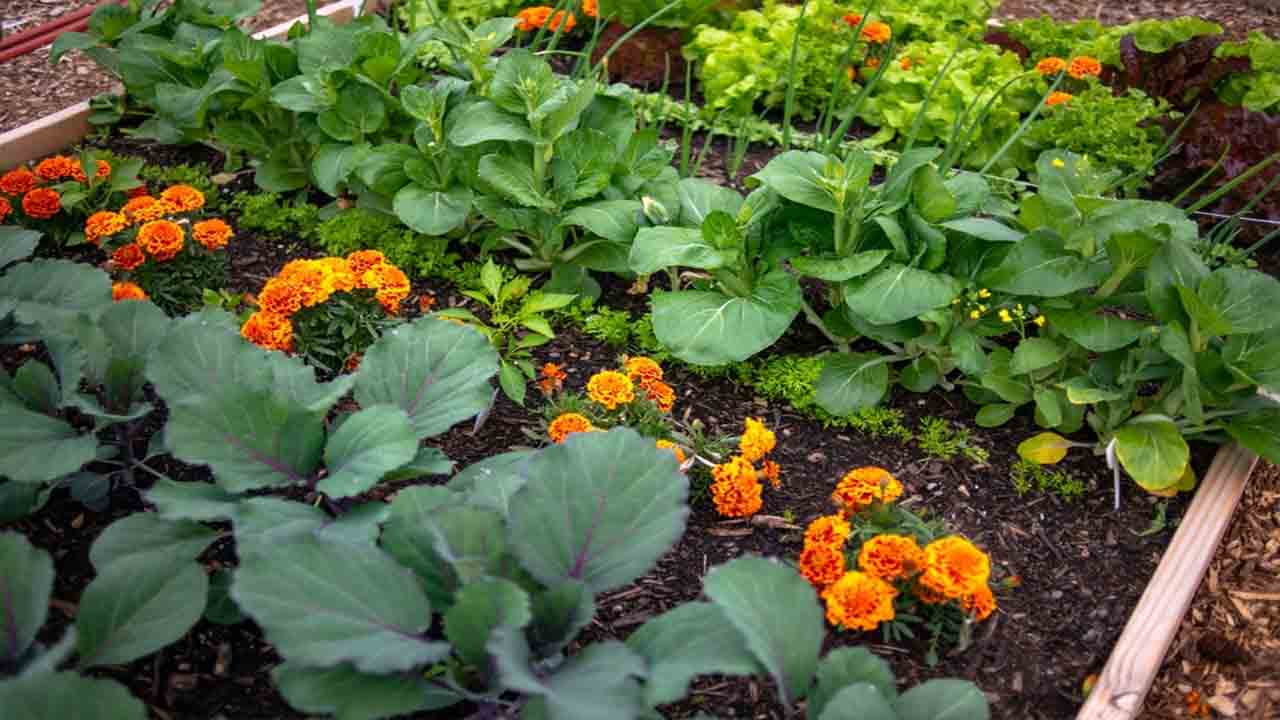Potatoes are a staple crop in many households, loved for their versatility and delicious flavor. However, growing potatoes can come with its own set of challenges, such as pests and diseases.
One way to combat these issues and promote healthier potato growth is by implementing companion planting. Companion planting involves strategically planting certain crops together to benefit each other regarding growth, productivity, and pest control. We will explore the world of companion plants for potatoes.
Review: We will discuss the benefits of companion planting, the best companion-plants for potatoes, and how to incorporate them into your garden effectively. By incorporating these companion plants, you will see a positive impact on your potatoes and create a diverse and thriving ecosystem in your garden.

What Is Companion Planting?

Companion planting is a gardening technique that involves growing different plants together to enhance their growth and health. This practice has been utilized for centuries, offering numerous benefits for the plants and the garden ecosystem.
By strategically pairing compatible plants, gardeners can foster symbiotic relationships that promote natural pest control, improve soil fertility, and maximize crop yields. Companion planting works by capitalizing on different plants’ natural properties and characteristics.
For instance, some plants emit strong scents that repel pests, acting as natural deterrents. By interplanting these with susceptible crops, gardeners can effectively protect their plants from pest infestations without resorting to harmful chemicals. Additionally, certain plants can attract beneficial insects, such as bees and ladybugs, that aid in pollination and prey on garden pests.
12 Companion Plants For Potatoes

Understanding companion plants for potatoes is essential for successful gardening and optimal crop yields. Companion planting refers to the strategic arrangement of plants to enhance each other’s growth and deter pests and diseases. Regarding potatoes, having the right companion plants can significantly improve their overall health and productivity.
1.Alyssum

Alyssum, commonly known as sweet alyssum, is popular for gardeners seeking potato companion plants. This delicate and fragrant flower enhances the potato patch’s aesthetic appeal and provides several benefits to potato plants. Alyssum is a natural pest deterrent, attracting beneficial insects such as ladybugs and lacewings that prey on common potato pests like aphids and flea beetles.
Furthermore, Alyssum’s low-growing habit creates a living ground cover that helps suppress the growth of weeds, reducing competition for vital nutrients and moisture in the soil. Its shallow root system also complements the deep-rooted potatoes, ensuring efficient use of available resources.
2.Cabbage Family Plants

Regarding growing potatoes, companion plants from the cabbage family can enhance their growth and overall health. The cabbage family, or Brassicaceae, includes plants such as cabbage, broccoli, kale, and cauliflower. These plants are not only nutritious additions to our diets, but they also offer several benefits when grown alongside potatoes.
One key advantage of planting cabbage family plants alongside potatoes is their ability to repel certain pests. Cabbage family plants release strong-smelling compounds that act as natural insect repellents.
For example, cabbage’s scent can deter pests like aphids and cabbage worms, which are notorious for damaging potato plants. By strategically interplanting cabbage family plants with potatoes, gardeners can create a natural barrier against these pests, reducing the need for harmful pesticides.
3.Corn
Selecting the right companion plants for cultivating potatoes is crucial for promoting healthy growth and maximizing yields. One such companion plant that has shown promising results is corn. Corn, scientifically known as Zea mays, not only complements the growth habit of potatoes but also provides several benefits to the overall health and productivity of the potato crop.
Corn is an excellent potato companion due to its tall stature and dense foliage. The towering cornstalks create a natural wind barrier, protecting the delicate potato plants from strong gusts that may cause damage or breakage. Furthermore, the dense foliage of corn shades the soil, preventing excessive evaporation and maintaining optimal moisture levels for the potato plants.
4.Chives

Chives have long been regarded as an excellent companion plant for potatoes due to their numerous benefits. These slender, green herbs not only add a touch of aesthetic appeal to the potato patch but also provide several practical advantages.
As a member of the allium family, chives naturally repel pests such as aphids, which can be detrimental to potato crops. Their strong aroma is a deterrent, keeping these destructive insects at bay and reducing the need for chemical pesticides.
5.Cilantro
Cilantro, also known as coriander, is a versatile herb that not only adds a distinct flavor and aroma to various culinary dishes but also offers numerous benefits as a companion plant for potatoes. When it comes to growing potatoes, selecting the right companion plants can enhance their growth and protect them from pests and diseases.
With its unique characteristics, Cilantro proves to be an excellent choice for this purpose. One of the key advantages of planting cilantro alongside potatoes is its ability to deter harmful insects and pests.
Cilantro emits a strong scent that repels pests like aphids, mites, and potato beetles, preventing them from damaging the potato plants. Moreover, cilantro attracts beneficial insects such as ladybugs and hoverflies, which feed on these pests, effectively acting as a natural pest control.
6.Flax
Regarding cultivating potatoes, it is essential to consider companion plants that can enhance their growth and overall health. One such companion plant that has gained recognition for its beneficial properties is flax. Flax, scientifically known as Linum usitatissimum, is a versatile plant with numerous advantages when planted alongside potatoes.
Flax acts as a natural pest repellent. Its strong aroma deters common potato pests such as aphids, beetles, and nematodes, reducing the need for chemical interventions. This promotes a healthier potato crop and aligns with sustainable agricultural practices.
7.Horseradish

Selecting the right companion plants for cultivating a successful potato crop can greatly enhance its growth and yield. One such companion plant that has proven beneficial for potatoes is horseradish. Horseradish, scientifically known as Armoracia rusticana, is a perennial plant that belongs to the Brassicaceae family.
With its intense flavor and medicinal properties, horseradish brings more than just a unique taste. Horseradish is an excellent companion plant for potatoes due to its ability to repel harmful pests and diseases. Its strong aroma is a natural deterrent against common potato pests, such as potato beetles and aphids, reducing the need for chemical pesticides.
8.Leeks
Leeks, known for their mild and onion-like flavor, have become a popular choice for gardeners looking to enhance the growth and health of their potato plants. These versatile vegetables add a delicious taste to various dishes and serve as excellent companion-plants for potatoes.
The symbiotic relationship between leeks and potatoes goes beyond flavor, as leeks offer several benefits to their potato counterparts. When planted alongside potatoes, leeks act as natural pest deterrents.
Their strong aroma repels pests like aphids, nematodes, and carrot flies commonly afflict potato plants. By creating a barrier, leeks effectively protect potatoes from these harmful insects, reducing the need for chemical pesticides and promoting a healthier, organic gardening environment.
9.Legumes

Legumes have long been recognized as excellent companion-plants for potatoes due to their benefits. After that, Legumes, such as peas and beans, are known for fixing atmospheric nitrogen into the soil. Making it more available for other plants. This nitrogen fixation process helps to enhance the overall fertility of the soil, which is crucial for the optimal growth and development of potatoes.
Furthermore, legumes have deep roots that can help improve soil structure by breaking up compacted soil and increasing its water-holding capacity. This is particularly important for potatoes, which thrive in loose, well-drained soil. The deep-rooted nature of legumes also aids in preventing soil erosion and nutrient leaching, which can be detrimental to the health of potato plants.
10.Marigolds
Marigolds have long been recognized as excellent companion-plants for potatoes due to their numerous benefits. These vibrant and hardy flowers add beauty to the garden and provide a range of advantages when planted alongside potatoes.
One of the key benefits of marigolds as companion-plants for potatoes is their ability to repel pests. Marigolds emit a strong aroma that acts as a natural deterrent for many insects, including nematodes, which are known to attack potato roots. Farmers and gardeners can effectively reduce the risk of pest infestations and subsequent crop damage by planting marigolds near potato crops.
11.Yarrow

Yarrow is recognized as one of the most beneficial companion-plants for potatoes. With its resilience and versatility, yarrow offers numerous advantages to potato plants. Making it an essential addition to any potato garden. Firstly, yarrow’s aromatic properties help repel harmful pests commonly affecting potatoes, such as aphids and nematodes.
By acting as a natural insect repellent, yarrow promotes a healthier and more robust potato crop, minimizing the need for chemical pesticides. Yarrow’s deep roots help improve soil structure and fertility.
Its ability to accumulate nutrients deep in the soil and bring them to the surface benefits neighboring potato plants by providing additional access to essential minerals. This nutrient-sharing process, known as dynamic accumulation, enhances the overall health and vigor of the potato plants, leading to higher yields and better quality tubers.
12.Nasturtiums
Nasturtiums are highly regarded as excellent companion-plants for potatoes due to their numerous benefits. These vibrant and versatile flowers add aesthetic appeal to the garden and serve as a natural pest deterrent and soil enhancer. As companion plants, nasturtiums help protect potatoes from harmful insects and diseases, such as aphids, potato beetles, and fungal infections.
Their aromatic scent and peppery taste are a deterrent, effectively reducing the risk of infestations. Furthermore, nasturtiums promote biodiversity in the garden by attracting beneficial insects like ladybugs and bees, which play a crucial role in pollination and maintaining ecological balance. This benefits the potato plants and contributes to the garden’s overall health and productivity.
What Are The Benefits Of Companion Planting?

Companion planting, also known as intercropping or mixed cropping, is a practice that involves planting different crops together to maximize their potential benefits. Understanding the benefits of companion planting is crucial for any farmer or gardener who seeks to optimize their crop yield and promote a sustainable and healthy ecosystem.
- Improved Pest Control: Companion planting involves pairing plants that naturally repel pests or attract beneficial insects. This helps in reducing the need for chemical pesticides.
- Enhanced Pollination: Certain companion plants attract pollinators such as bees and butterflies, which can increase the overall pollination of your garden.
- Efficient Use Of Space: Companion planting allows you to maximize your garden space by intercropping different plant species that complement each other regarding growth habits and resource requirements.
- Weed Suppression: Some companion plants have dense foliage that helps shade the ground. Reduce weed growth and minimize competition for nutrients and water.
- Soil Improvement: Certain combinations of companion plants can improve soil fertility by fixing nitrogen or accumulating nutrients. Thereby creating a healthier growing environment for all plants.
- Increased Crop Yields: When compatible plants are grown together, they can support each other’s growth and development. Leading to higher yields and better overall plant health.
Conclusion:
Incorporating companion plants into your potato garden can bring numerous benefits, from improving soil quality and deterring pests to enhancing the flavor and yield of your potatoes. These plants are a valuable addition to any potato grower’s strategy.
By carefully selecting and pairing the right companion plants, you can create a symbiotic and sustainable garden ecosystem that will benefit your potatoes and overall gardening experience. So why not give companion planting a try and see the positive impact it can have on your potato harvest? If you read the above outline properly, we hope you understand companion plants for potatoes.
FAQ
1.What Are Companion-Plants For Potatoes?
Ans: Companion-plants for potatoes are beneficial when grown alongside potato plants, either by enhancing growth, repelling pests, or providing shade and support.
2.Which Plants Make Good Companions For Potatoes?
Ans: Some popular companion-plants for potatoes include marigolds, beans, corn, horseradish, and tansy. These plants help deter pests, improve soil health, and provide beneficial nutrients.
3.How Do Marigolds Benefit Potato Plants?
Ans: Marigolds act as natural pest repellents, keeping away insects like nematodes and aphids that can harm potato plants. They also attract beneficial insects that prey on potato pests.
4.Can Potatoes Be Planted Near Tomatoes?
Ans: It is generally advised to avoid planting potatoes near tomatoes as both plants are susceptible to similar diseases, such as late blight. However, if proper spacing and disease prevention measures are taken, they
5.Why Are Companion Plants Important For Potatoes?
Ans: Companion plants help deter pests, attract beneficial insects, and enhance potato nutrient uptake. They are resulting in healthier growth and improved yields.
